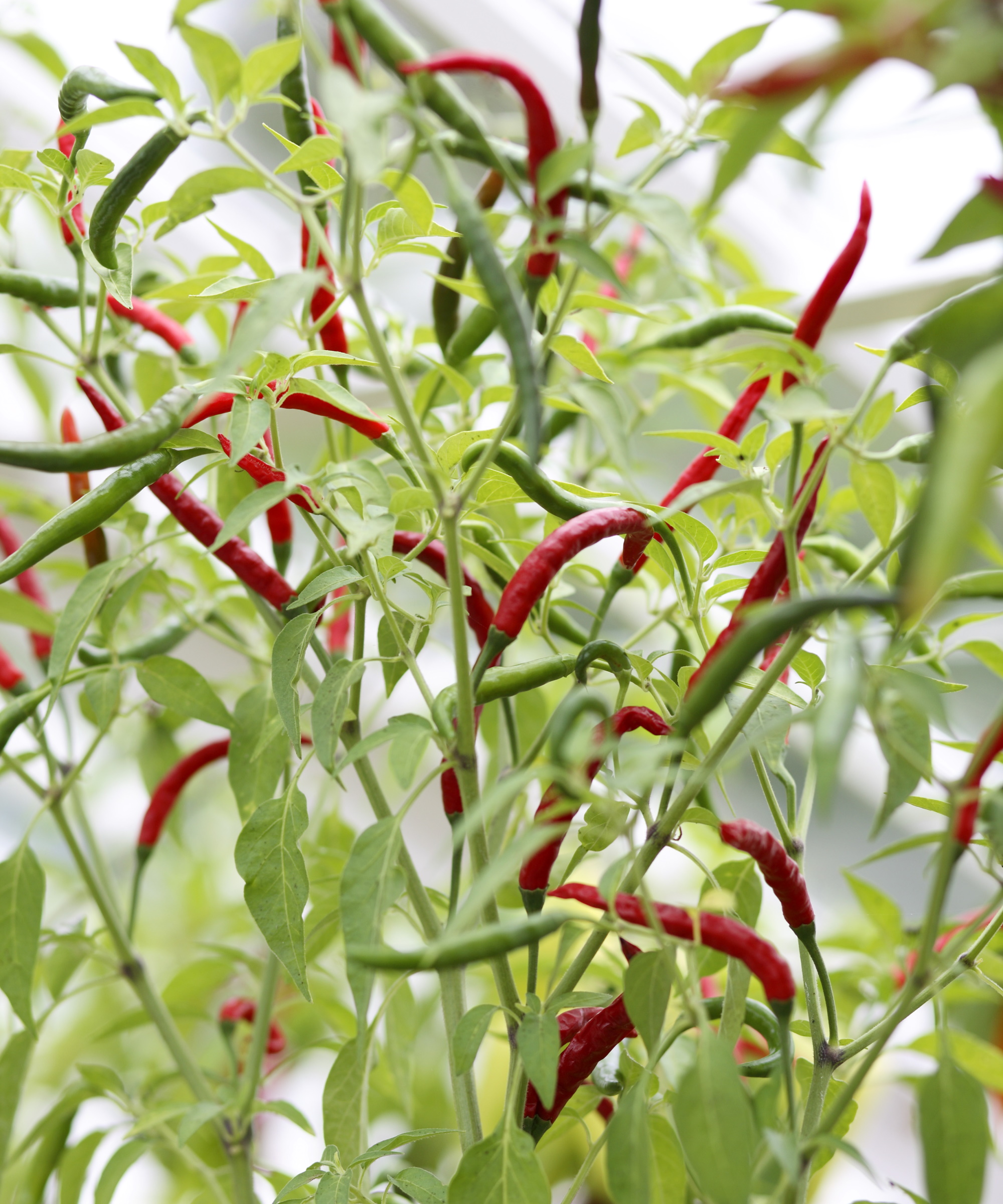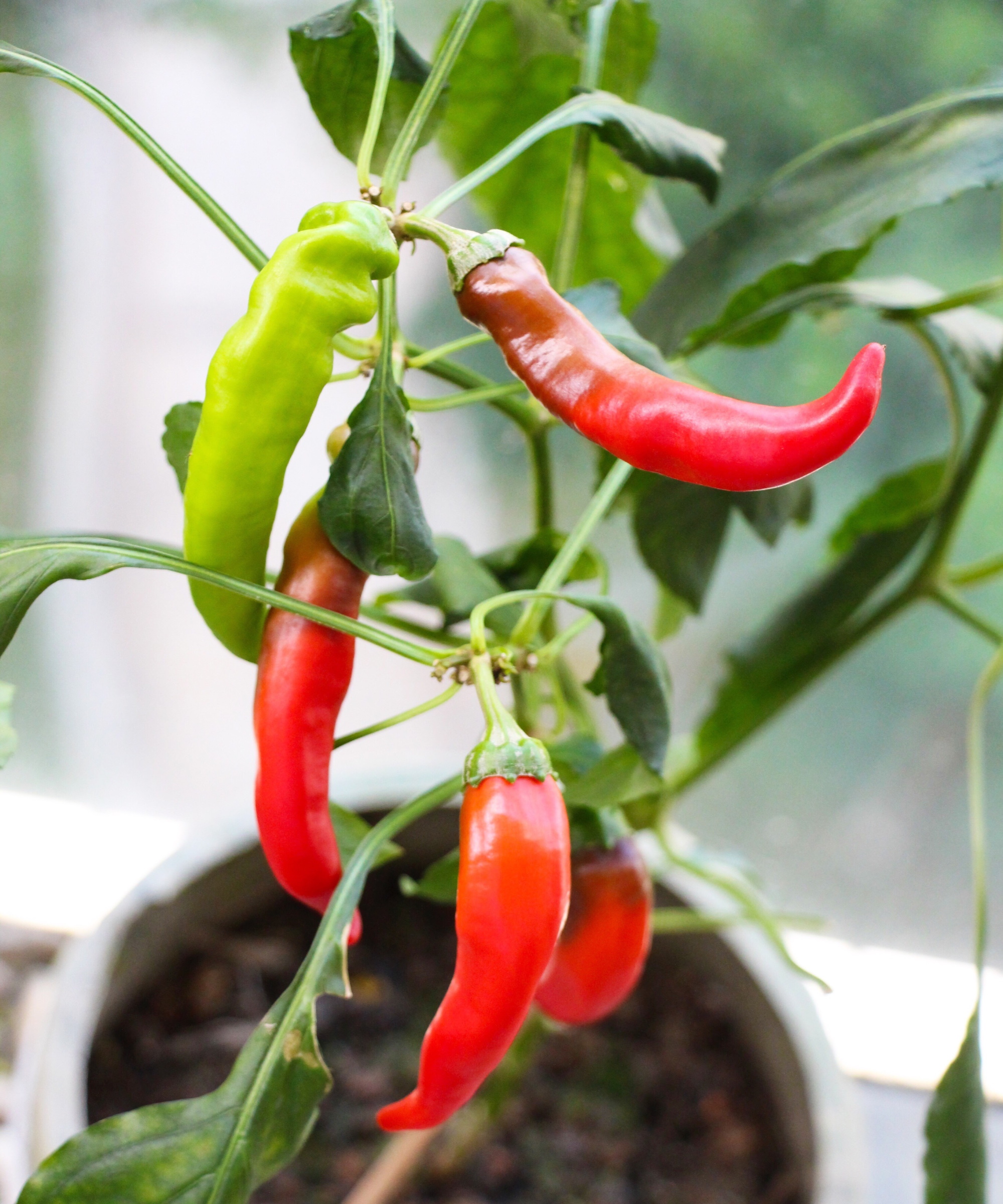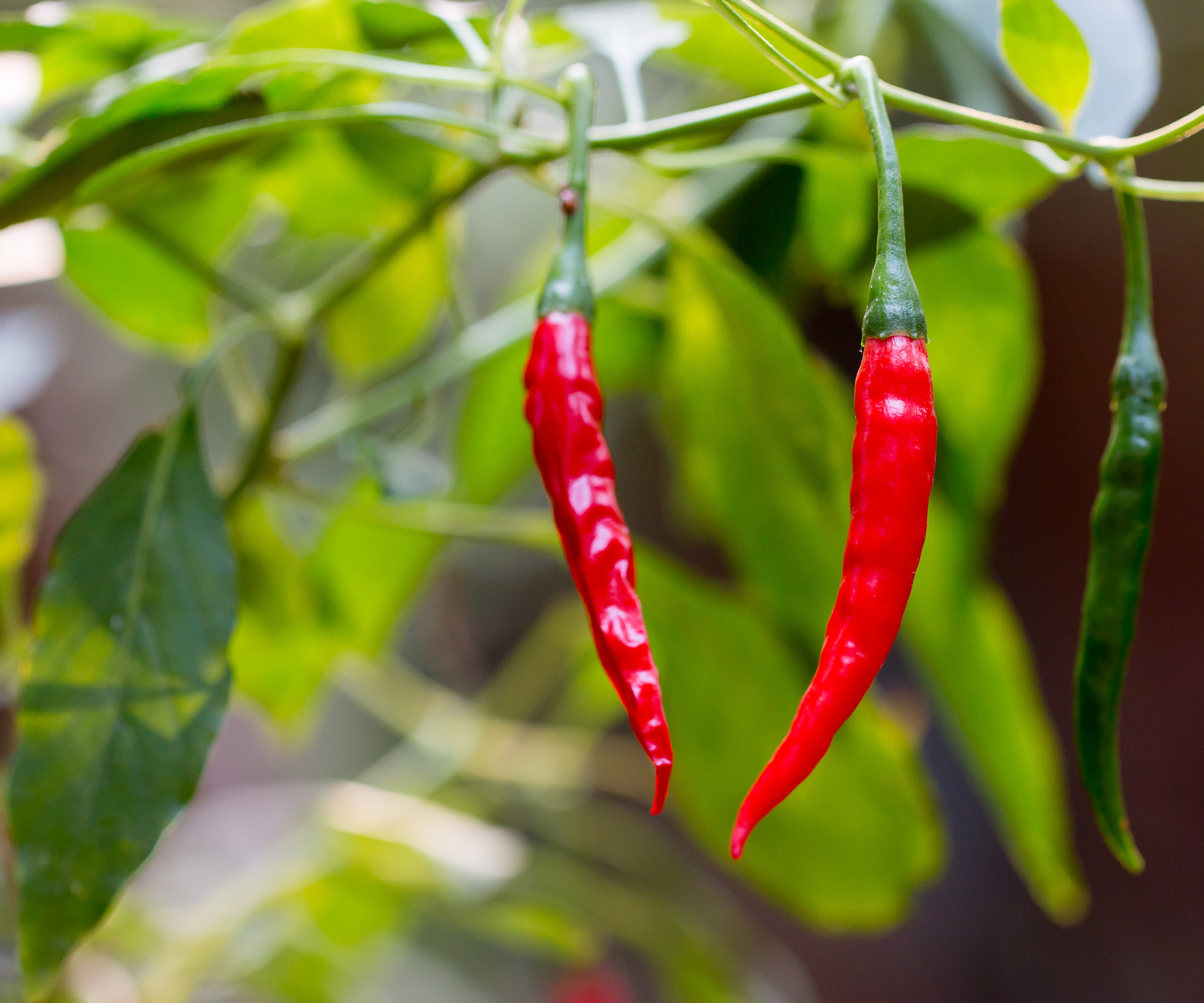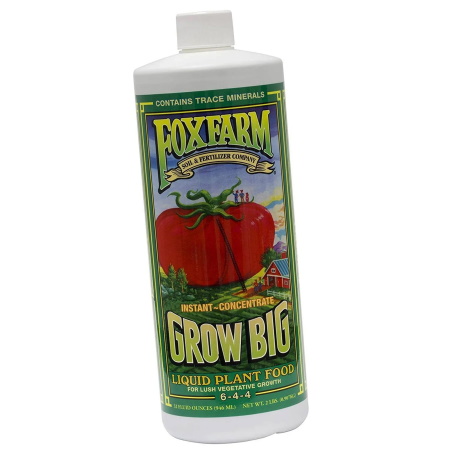When and how to fertilize chilli plants – plus expert tips for the best feeds to use
Discover expert-recommended fertilizers for chili pepper plants to get the best harvest


Chili pepper plants benefit from being fertilized throughout the growing season. Providing the right nutrients can reward you with a fantastic yield of fruits, though some growers, especially those new to growing chilies, can be hesitant and potentially confused about what the best fertilizers for chili plants are.
I have grown chili peppers for many years. They were a crop I cultivated in large quantities in vegetable gardens in the UK, where I grew them in greenhouses to harvest for restaurants and to sell to garden visitors.
It was always important to fertilize the chili pepper plants to get the healthiest plants and the biggest crop possible. Fertilizing chilies is not a one-off task, they need regular feeding throughout the season to have thriving plants and a bountiful harvest each year. To help alleviate any uncertainty, I look closely at when and how to fertilize chili peppers.

Taking time to fertilize chili plants will reward you with a great crop
Fertilizer for chili peppers - how important is it?
Fertilizing is essential when growing all types of chili peppers. Whether you are growing jalapeno peppers, banana peppers, padron, Carolina Reaper, or any of the thousands of chili varieties globally, they are hungry plants and giving them the right nutrients throughout the season will boost your harvests.
When and how to fertilize chilli plants

Fertilizing chili plants helps fruits develop and ripen
Before doing, or planning, any fertilizing, it is always beneficial to conduct a soil test to understand the current nutrient levels of the soil. Such tests are simple to carry out and can identify any deficiencies in your soil that may need to be addressed before planting or throughout the season.
There is no requirement to fertilize seedlings early on after sowing the seeds as using good potting soil for starting seeds should provide all the nutrients the young seedlings require.
At the stage of pricking out, or transplanting seedlings to a larger pot, mixing some slow-release granular fertilizer into the potting mix can help develop a strong root network and healthy young chili plant. I always add feed at this point, however, it is advised to check your potting soil. Some products may already have feed within and you don’t want to add any more and risk overfertilizing plants.
Design expertise in your inbox – from inspiring decorating ideas and beautiful celebrity homes to practical gardening advice and shopping round-ups.
The next potential opportunity to feed comes when you plant the vegetable into its final growing space. Crystal Jarvis from Lettuce Grow Something claims she likes to ‘give plants a boost by mixing in some compost and a sprinkle of organic all-purpose vegetable fertilizer’ when planting.
Adding organic matter, such as compost or well-rotted manure, either before or when planting is highly recommended. It helps improve the soil structure, retains moisture in the ground, and feeds plants as they slowly break down. A handful of feed mixed in with the soil when backfilling the hole is beneficial too, as it provides a slow and steady feed of nutrients to help the plant develop a strong set of roots.
Post-planting, a good fertilizing regime for chilies continues throughout the growing season. ‘Fertilize your plant six weeks after planting and again after it produces a flower,’ says Charmaine Peters, farm director at Arden Farm. ‘This timing helps the plant develop roots as it starts growing and provides more nutrients to support fruit production.’
Once the plants start flowering, use a fertilizer that is higher in phosphorus and potassium to encourage the development of flowers and fruits. Such a product tends to be a liquid fertilizer and is added routinely every week or two when you water plants. I always implemented this regime when growing crops of chilis to ensure a continuous harvest of fruits throughout the summer.
Such a consistent feeding regime is key to getting a fantastic harvest of chilis and combatting issues like blossom end rot, which is caused by a lack of calcium in the fruits. The type of liquid feed ideal for chili peppers will contain this key nutrient and help prevent you from losing fruit to rot.

Charmaine Peters is the Farm Director at Arden, an Agrihood community in South Florida. She is an experienced farmer and a passionate advocate for health, nutrition, and supporting local communities with organic food.
How to pick the ideal fertilizer for chili pepper plants

Fertilize chili peppers throughout the growing season for the best results
Store shelves and websites are chocked full of different fertilizers and it can be confusing to find the ideal one for your plants. To help make informed decisions, every product will showcase the makeup of nitrogen (N), phosphorus (P) and potassium (K) as three plant fertilizer numbers on the packaging. These three figures will show how much of each nutrient is contained, for example, a balanced feed will have equal numbers such as 5-5-5 or 10-10-10.
Fertilizer will also come in granular or liquid forms. The former are scattered around plants and mixed into the soil to release nutrients slowly over time. On the other hand, liquid feeds are mixed with water and are faster-acting. They give plants a quick dose of nutrients and must be used more regularly.
The best fertilizers for transplanting chili peppers are slow-release granular products. Crystal Jarvis recommended an ‘organic all-purpose vegetable fertilizer’ such as the Down to Earth Organic Vegetable Garden Fertilizer available at Amazon.
While Crystal uses an all-purpose feed, an alternative, as highlighted by Dick Zonda, owner of Jung Seed Company, is to ‘add a little extra nitrogen’ when you plant the chili - such as a high-nitrogen fertilizer like blood meal, available at Burpee. Chilies need lots of nitrogen in the early stages as it is essential for developing leaves and stems, however, you do need to avoid adding too much over the season as it risks developing lots of green growth at the expense of flowers and fruits.
The fertilizer requirements switch during the growing season, therefore it requires a change in the types of fertilizers you use.
‘As the plants start producing flowers and fruits, switch to a balanced fertilizer with a lower nitrogen content— an NPK ratio of 5-10-10,’ advises Charmaine Peters. ‘This shift will help focus more on producing fruits rather than more foliage growth. Then, continue fertilizing every three to four weeks.’ An example of one 5-10-10 product is this Tomato and Vegetable Fertilizer, available at Amazon.
Typically, the best feeds for chili plants to encourage the development of flowers and fruits are liquid fertilizers specifically designed for growing tomatoes. As well as dedicated tomato fertilizers, I have also had success feeding with a liquid seaweed fertilizer, such as Maxicrop Liquid Seaweed available at Walmart, every week during the summer months.
‘Liquid, organic fertilizers are the best for chili peppers as they feed slowly and the nutrients move quickly into the root zone,’ says Michael Clarke, gardener and founder of Yardwork. ‘I recommend the Fox Farm Grow Big Liquid Concentrate.’
While there are lots of choices for products to fertilize chilis, there remain options to make a plant fertilizer at home. This includes making comfrey fertilizer or a plant feed from weeds, both of which are made into a tea that needs to be diluted with water and applied to plants.

Michael Clarke is the founder of Yardwork and Pulled, the online platforms for everything home and garden. Yardwork is an online plant and tree nursery and landscaping platform. He has a degree in landscape architecture and horticulture from the University of California Davis.
FAQs
Is blood and bone good for chili plants?
Blood and bone can potentially be a beneficial product to use in the early stages of growing a chili pepper plant. A blood and bone fertilizer is high in nitrogen and phosphorus, for example, this Hi-Yield blood and bone meal product at Amazon has an NPK of 6-7-0. The nitrogen is beneficial for growing leaves and stems, while the phosphorus will help with root development. Such a product could be used when planting chili peppers to give them an early boost of nutrients.
Is Miracle-Gro good for chili plants?
Miracle-Gro offers several products that can be useful when growing chili peppers. It includes the Miracle-Gro Performance Organics Edibles, available at Amazon, that has an NPK of 9-4-12 and can be used in the early stages, such as when planting or to feed around six weeks post-planting. Once the plants are fruiting, switch to the Miracle-Gro Water Soluble Tomato Plant Food, also available at Amazon, to mix with water and apply to plants every 1-2 weeks.
One potential reason to opt against fertilizing chili plants is if you want to grow hotter peppers. Stressing plants is one way to increase the heat of chilies and holding back on watering and feeding can grow the amount of capsaicin in the fruits - which will make the chilies hotter. The pay-off to not feeding plants will be hotter peppers, but a much smaller harvest. It is not a tactic I would personally follow, but I am not a fan of super-hot chilies.

Drew has worked as a writer since 2008 and was also a professional gardener for many years. As a trained horticulturist, he worked in prestigious historic gardens, including Hanbury Hall and the world-famous Hidcote Manor Garden. He also spent time as a specialist kitchen gardener at Soho Farmhouse and Netherby Hall, where he grew vegetables, fruit, herbs, and cut flowers for restaurants. Drew has written for numerous print and online publications and is an allotment holder and garden blogger. He is shortlisted for the Digital Gardening Writer of the Year at the 2025 Garden Media Guild Awards.
